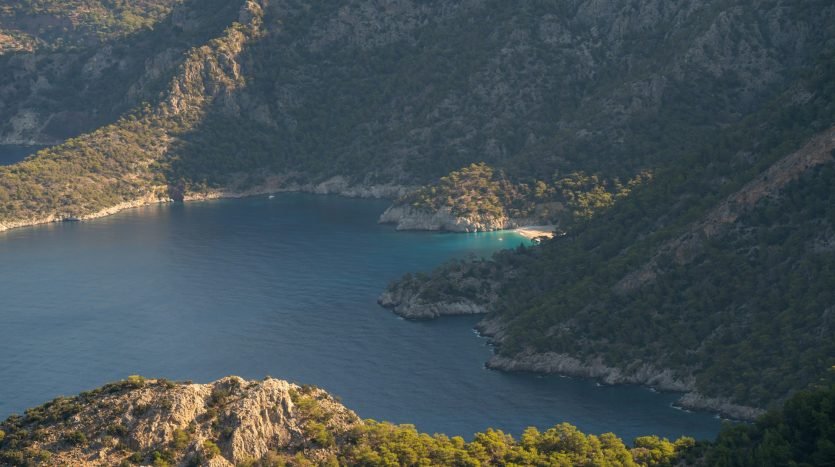Fethiye, located on the southwestern coast of Turkey, is a town steeped in history and known for its stunning natural beauty, ancient ruins, and vibrant local culture. Its origins date back thousands of years, reflected in its archaeological sites and historical landmarks. Here’s a comprehensive look at the history of Fethiye and its evolution through the ages.
1. Ancient Beginnings: Telmessos
Fethiye was originally known as Telmessos, founded in the 5th century BC. It was one of the key cities of ancient Lycia, located strategically along trade routes connecting various parts of the Mediterranean. As a significant settlement, Telmessos became known for its oracle, which drew visitors from across the region seeking prophecies and advice, much like the more famous oracle at Delphi.
2. Greek and Roman Influence
During classical antiquity, Telmessos flourished under Greek influence. The city was known for its theaters, temples, and buildings adorned with beautiful architecture. The ruins of a Hellenistic theater can still be seen in Fethiye today, offering visitors a glimpse into its cultural significance.
In the 2nd century BC, Telmessos became part of the Roman Empire. Under Roman rule, the city continued to prosper, benefiting from trade and its strategic location. The Romans constructed new buildings and improved infrastructure, further enhancing Telmessos’ status as an important urban center.
3. Lycian Rock Tombs
One of the most iconic features of Fethiye’s historical landscape is the Lycian rock tombs, carved into the cliffs overlooking the town. These rock-cut tombs date back to the 4th century BC and reflect the unique funerary practices of the Lycian people. The most famous of these is the tomb of Amyntas, a monumental structure that still stands today. These tombs are a testament to the architectural skills and beliefs of the ancient Lycians, and they remain a major attraction for visitors to the region.
4. Medieval Period
With the decline of the Roman Empire, Fethiye fell under the influence of various powers, including the Byzantines and the Seljuks. The city was known as “Makri” during the Byzantine period. It later fell under Seljuk and Ottoman rule, maintaining its importance as a port and center of trade.
5. Ottoman Era
Throughout the Ottoman Empire, Fethiye remained an important port and fishing center. The town’s economy revolved around fishing, capturing sponges, and agriculture, as the lush surroundings supported fruit and vegetable cultivation. Fethiye also played a significant role in maritime trade owing to its strategic coastal location.
During the late 19th and early 20th centuries, the Ottoman Empire entered a period of transformation. A series of modernization efforts saw improvements to infrastructure, commerce, and tourism. Many Greek inhabitants lived in Fethiye during this period, contributing to its multicultural heritage.
6. Modern Fethiye
With the establishment of the Republic of Turkey in 1923, Fethiye began evolving into a modern town. The demographic changes that occurred around this time led to a shift in local culture, as the remaining Greek population left the region, and Turkish citizens from other areas moved in.
In the latter half of the 20th century, Fethiye began to develop as a popular tourist destination, primarily due to its stunning coastal areas, historical sites, and proximity to natural wonders like the Ölüdeniz Blue Lagoon and the Lycian Way hiking trail. The town’s rich history and beautiful landscapes attracted travelers seeking both relaxation and adventure.
Today, Fethiye is known for its vibrant harbor, bustling bazaars, and combination of ancient ruins adjacent to modern amenities. It serves as a gateway for travelers looking to explore the Lycian Coast and engage in activities like sailing, diving, and hiking.
Conclusion
Fethiye’s rich history, from its ancient beginnings as Telmessos to its current status as a vibrant tourist destination, reflects the transitions of various cultures and civilizations over thousands of years. The interplay of history, nature, and local culture makes Fethiye a captivating place to visit, offering a unique blend of ancient ruins, vibrant marketplaces, and stunning Mediterranean views. Exploring Fethiye allows travelers to walk in the footsteps of history, gaining insight into the legacy of the Lycian civilization and the beauty of this coastal gem.
If you’re considering exploring Fethiye’s rich history and experiencing its natural beauty, let Aegean Locations assist you. Our expertise in the local area ensures a smooth and enjoyable journey. Contact Aegean Locations today to start your adventure in Fethiye. Discover our property in Fethiye portfolio.

